South Africa and the traditional Afrikaans culture from 100 or so years ago, was relatively poor. I don't think there were really affluent groups as the Afrikaans culture's origin is one of poverty. It is thus natural that some of the traditional dishes that remain in the culture have their heritage from the poverty-stricken peoples and origins. One such dish is "pap en tik" (porridge and tap), but has since been called "pap en sous/wors" (porridge and sauce/sausage).
There are two mainstream ideas on why the dish has been renamed since the olden days. Firstly, and linked to the origin story of the dish, is that people become more affluent. The literal meaning of the words is porridge and tap. The story goes that people from the Southern parts of South Africa (Knysna and the Lumberjacks from that era were relatively poor) who only had enough money to buy a small piece of meat, hung the meat from the ceiling so that everyone could "tap" their piece of porridge against the meat. The joke is thus that if you are left broke after all the expenses have been deducted from your salary, you will only have money left for "pap en tik" or you will need to tap your porridge against the little meat you have which you will then not eat. Your porridge will thus have some trace of meat taste.
The second reason why I think that the usage of "pap en tik" faded from our home language (Afrikaans) is because of the word "tik". The literal translation of "tik" means to tap, but in recent times with the widespread rise and (mis)use of crystal meth, the word tik in Afrikaans has come to mean the drug crystal meth. If you thus state I am having "pap en tik" most people will immediately think about crystal meth and not about the other origin story. Most people, especially in the Western Cape region (where crystal meth (mis)use is widespread, people started talking about "pap en sous/wors" (porridge and sauce/sausage).
However, the dish is still seen as relatively relating to the poor. But not that much. It is a staple to have porridge and sauce with other barbequed meat but as a side dish. So staying true to the origin of this dish, I will show you how to make a relatively easy and inexpensive version of pap en tik/pap en sous/sausage!
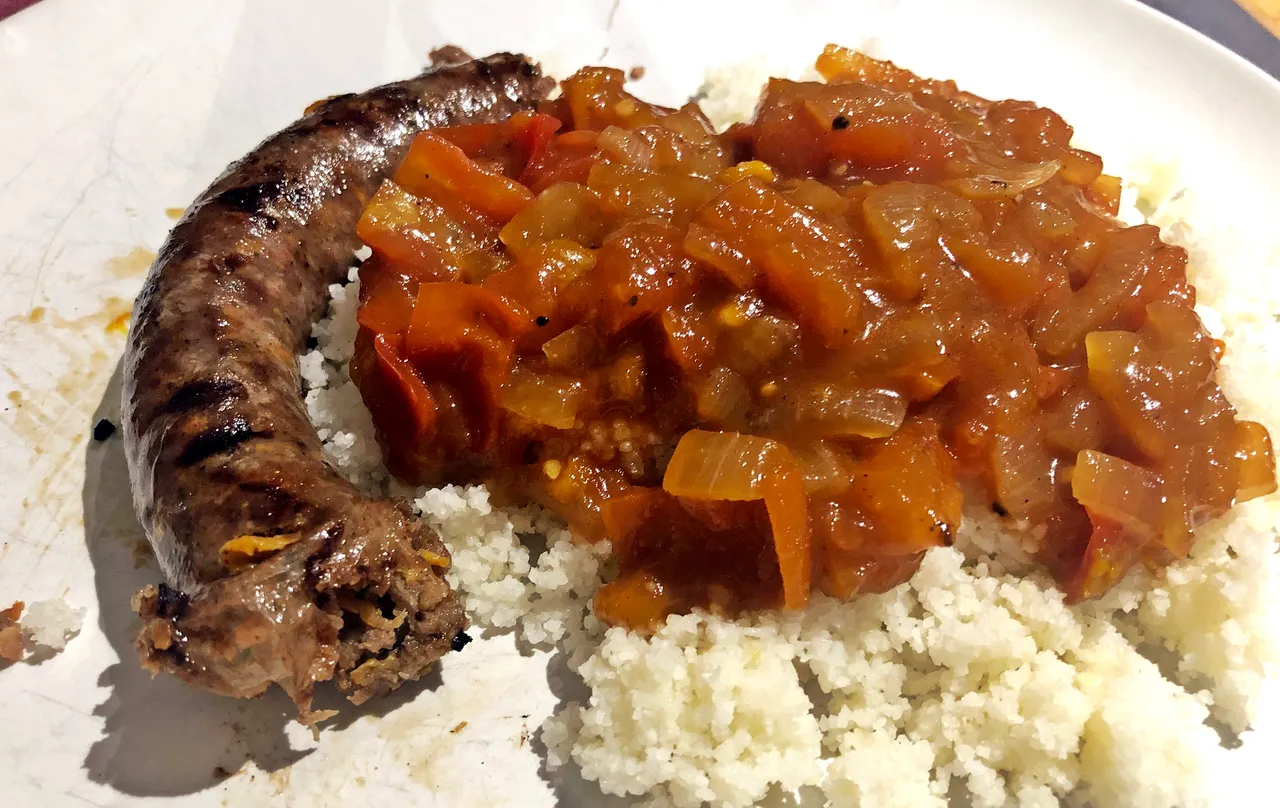
Making the Porridge
I am showing my dad's method for making porridge that is more crumbly ("krummel pap"). I will in the future some time post his method and recipe, I will only show some images now. This is in contrast to my previous method/recipe of making porridge you can read here. The method I am showing here is made in the microwave. It roughly takes the same amount of time but is a bit easier.

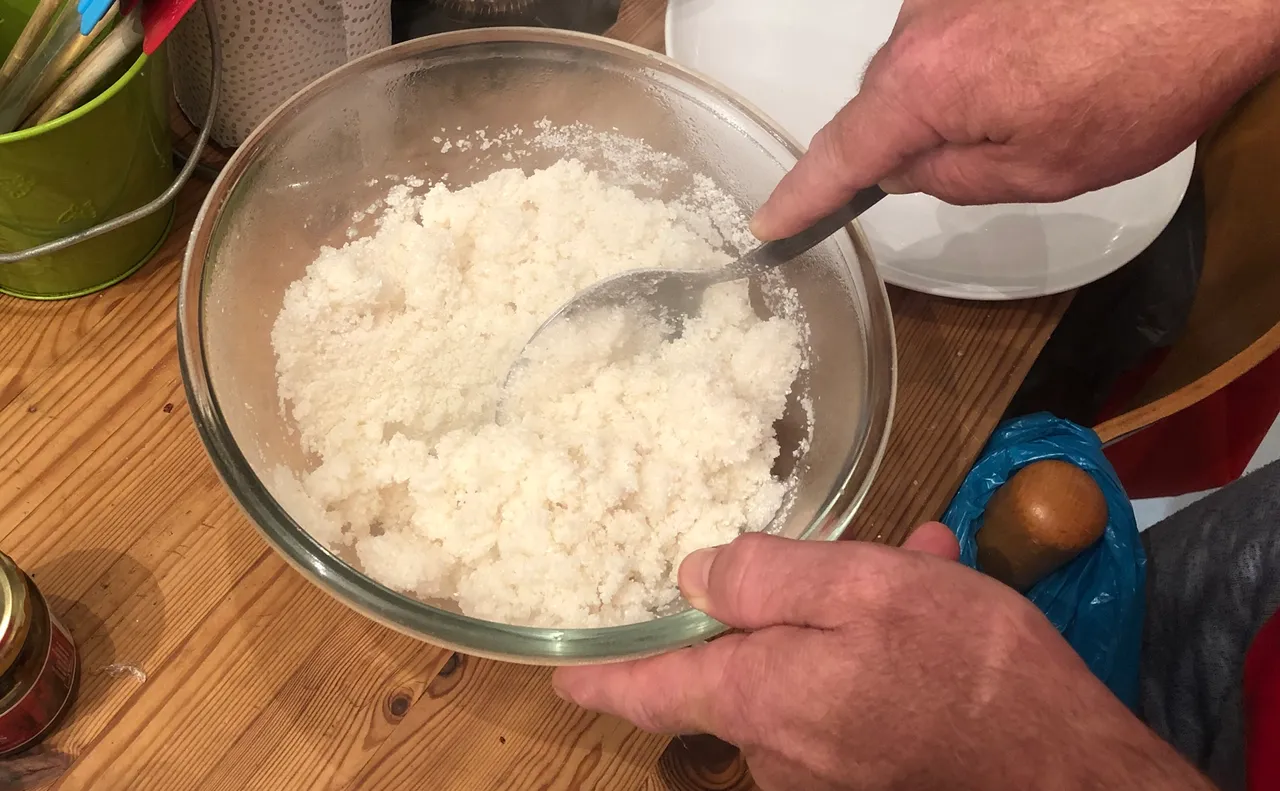
Adding some water, and microwaving the porridge, it will stiffen, but my dad breaks the lumps into smaller pieces.
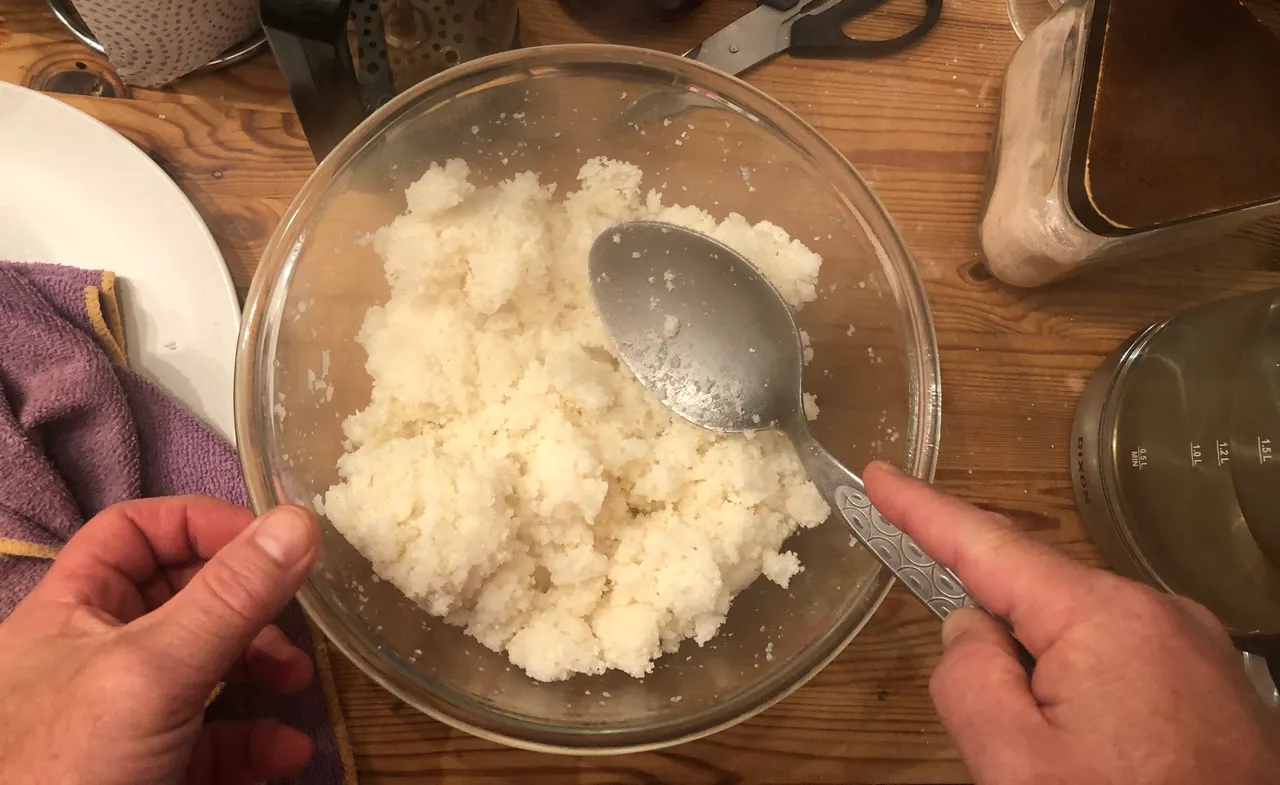
Here you can see the bigger lumps it has formed. This is often called putu pap or "stywe pap" (stiff porridge). By crumbling the bigger lumps you make "krummel pap" or umphokoqo (crumbled porridge).
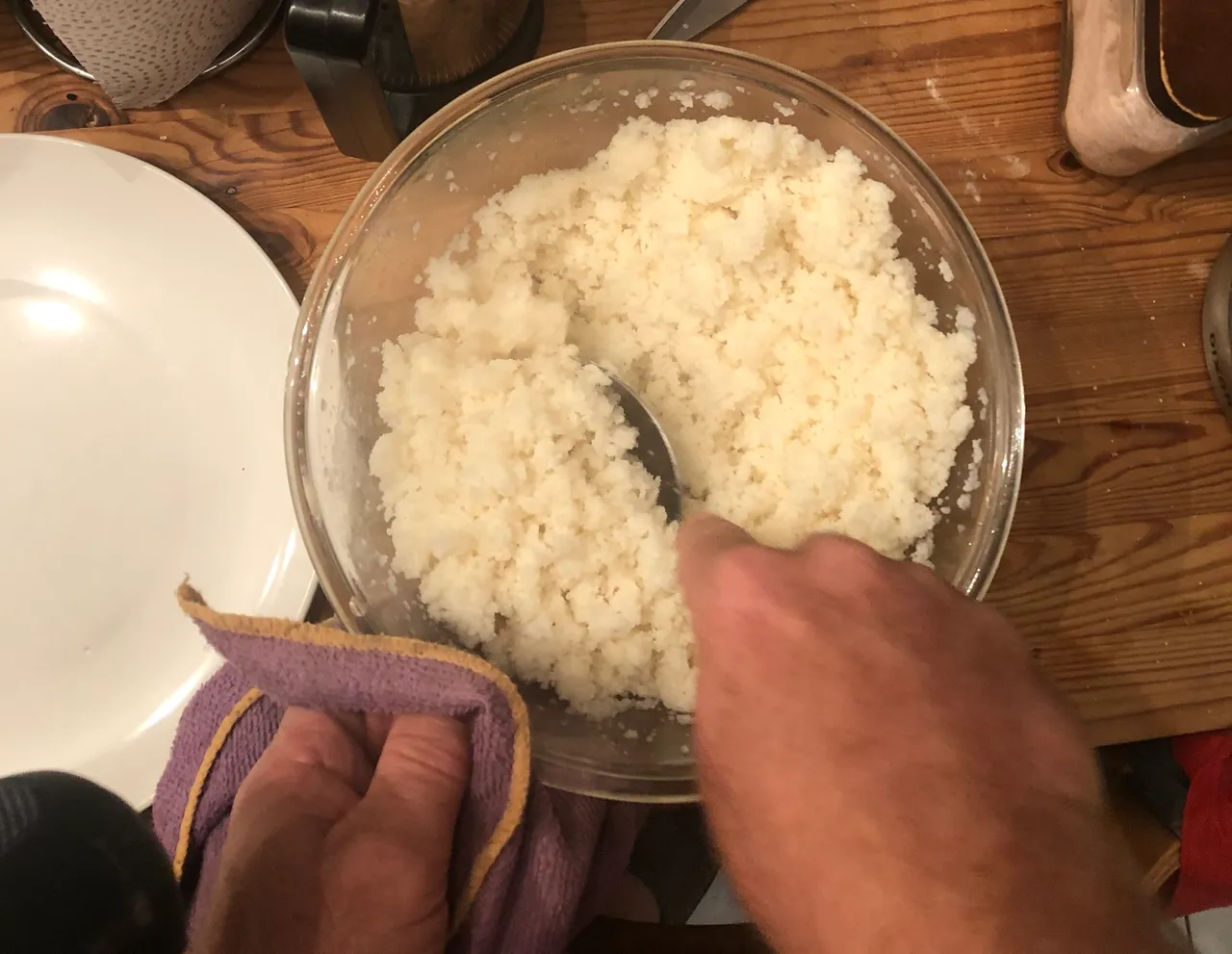
In this image, you can see the smaller crumbly pieces starting to form. The porridge is ready by this stage.
Making the Sauce
Keeping true to the origin, this sauce is very basic (with the edition of chutney and Worcestershire Sauce). I first caramelize the onions, add some chopped tomatoes (with the chutney and Worcestershire Sauce) and reduce it for ten or 20 minutes. Please see the images below for my method.

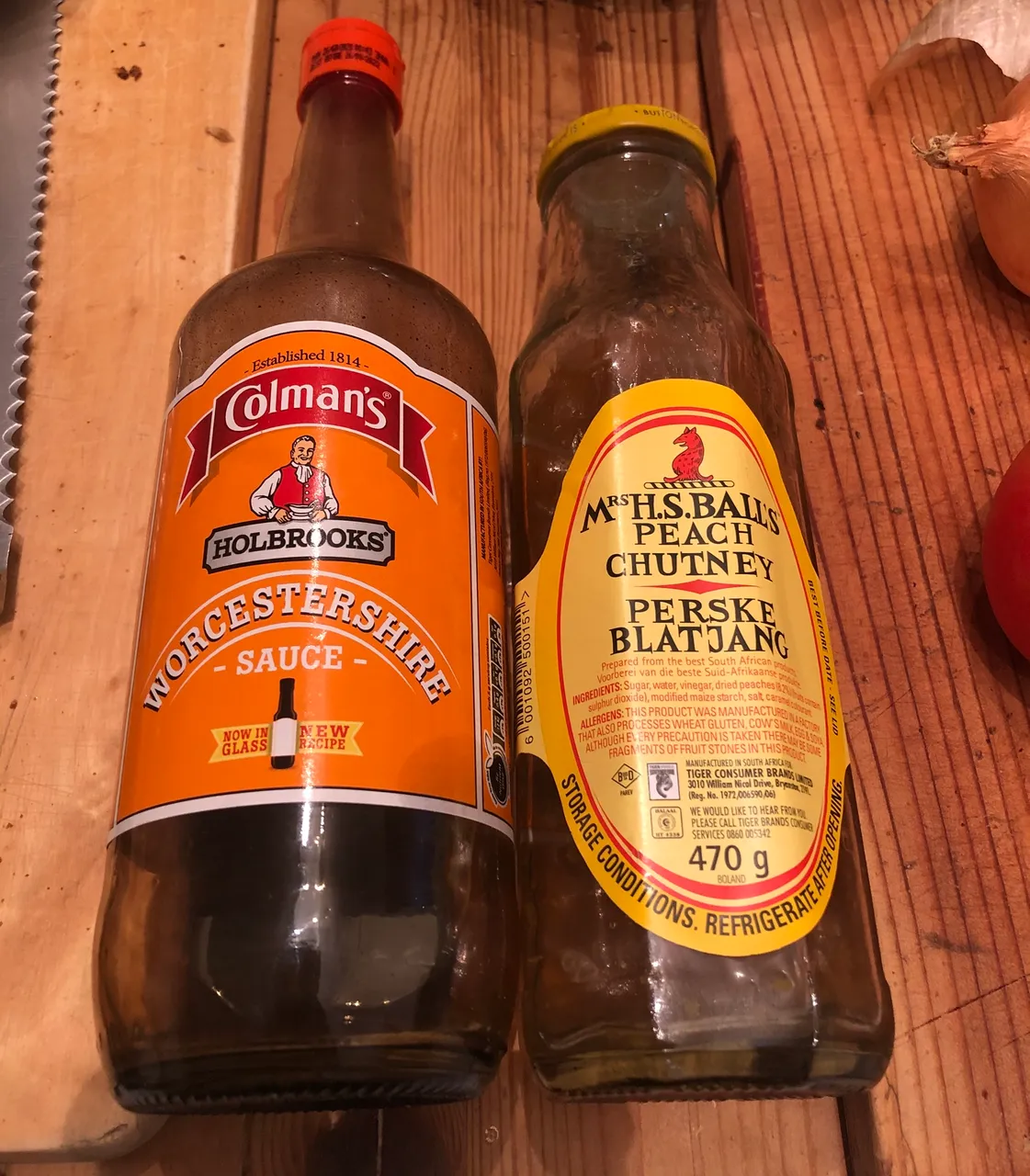
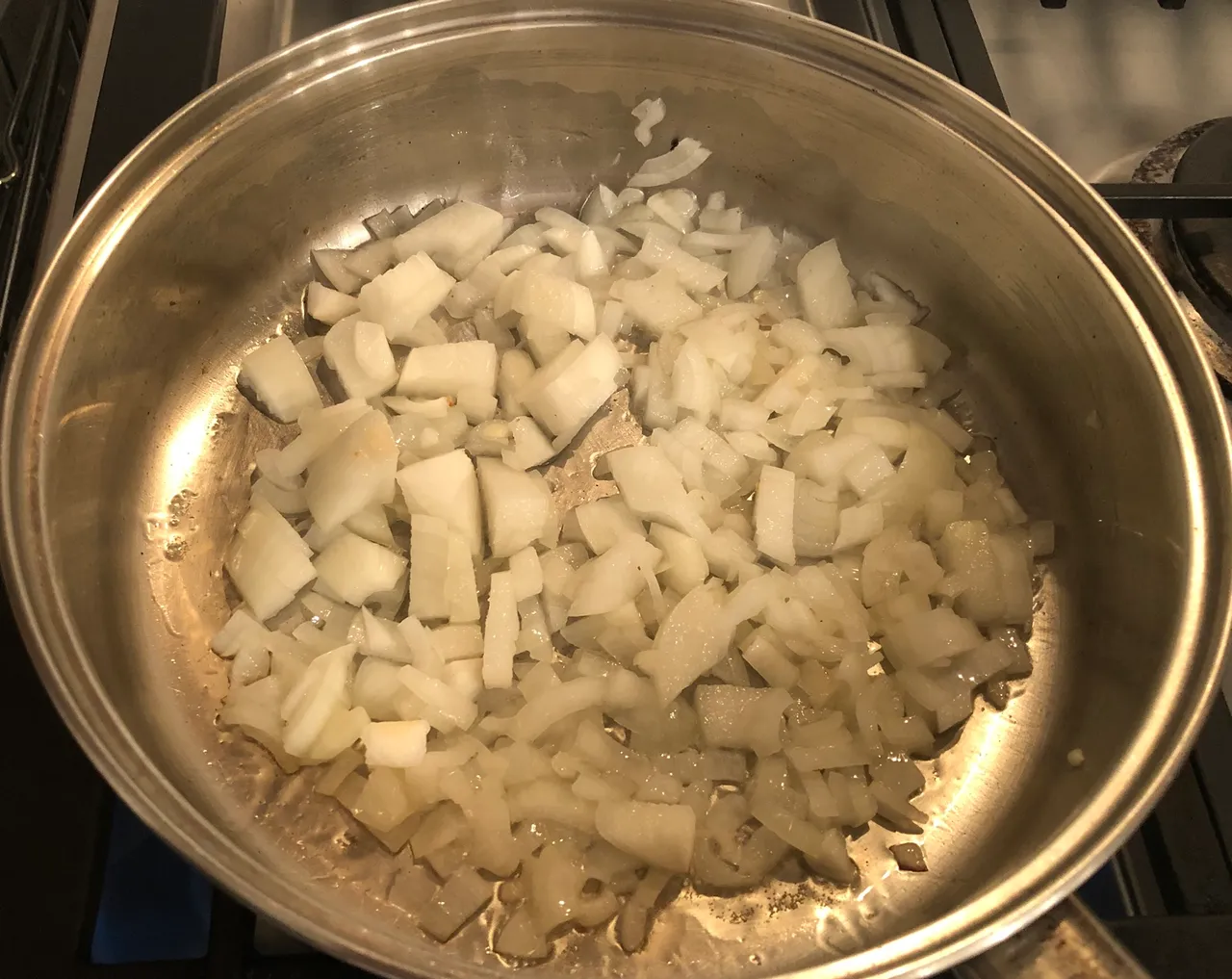

I caramelize the onions, then I deglaze the pan with some cheap supermarket tomatoes.
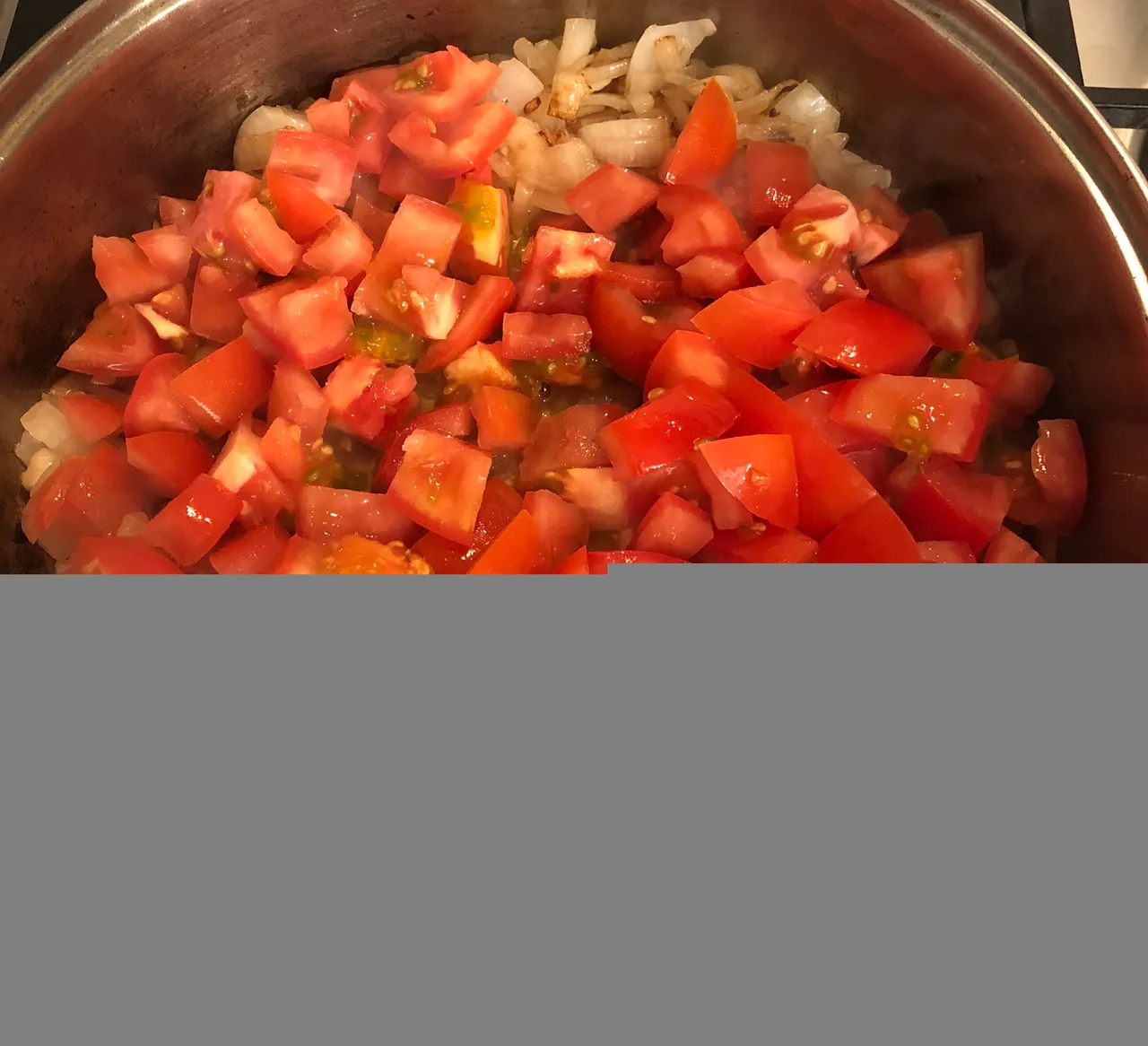
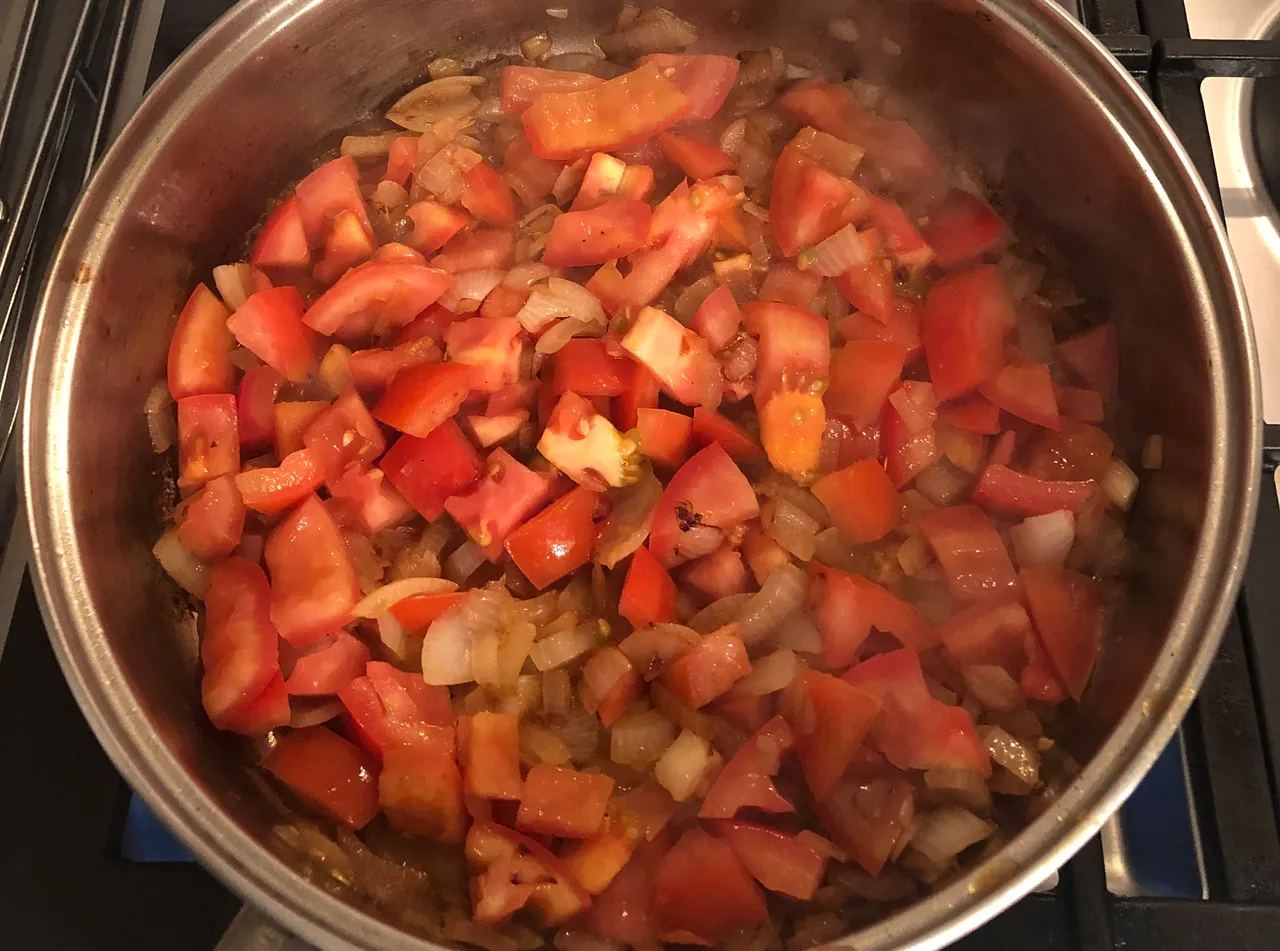
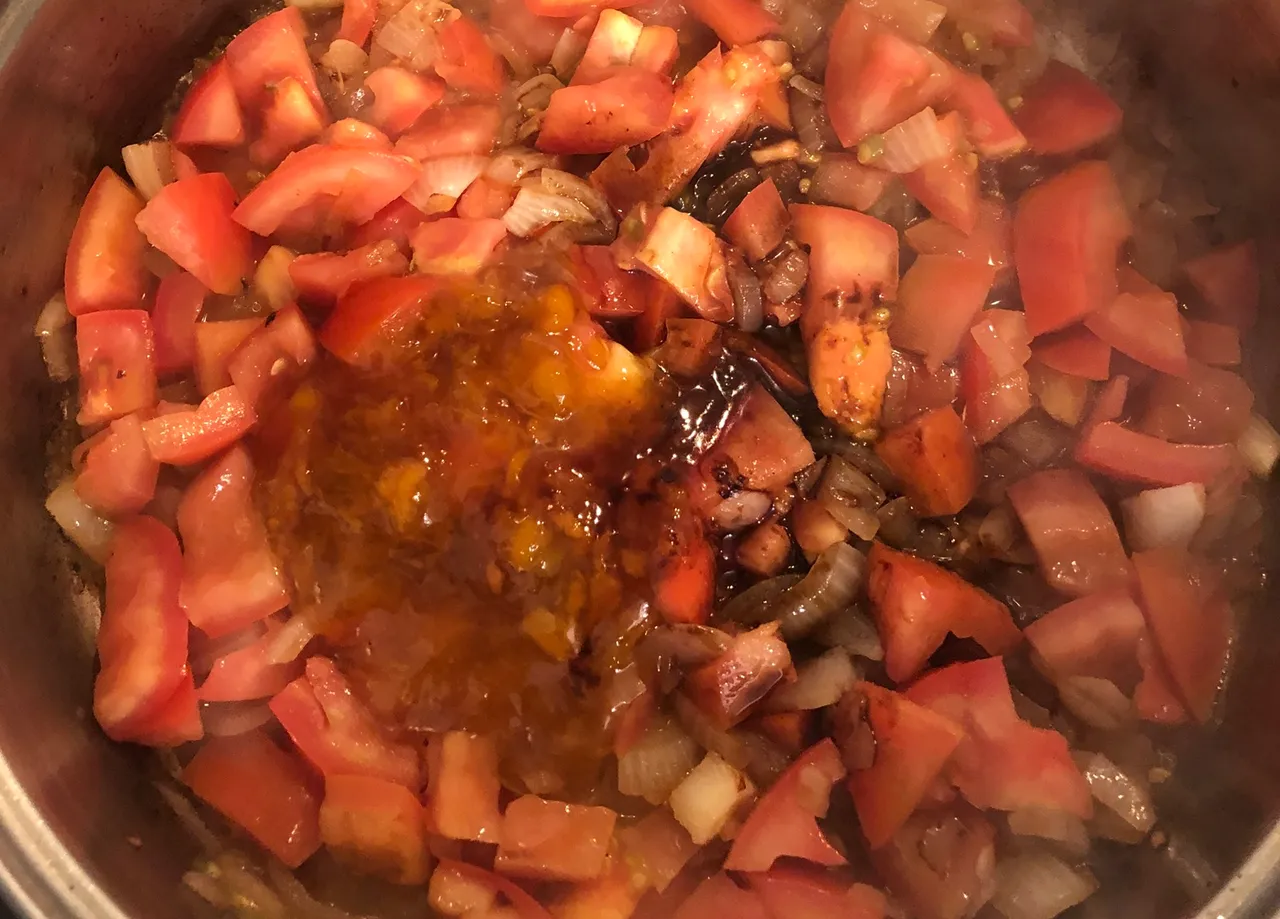
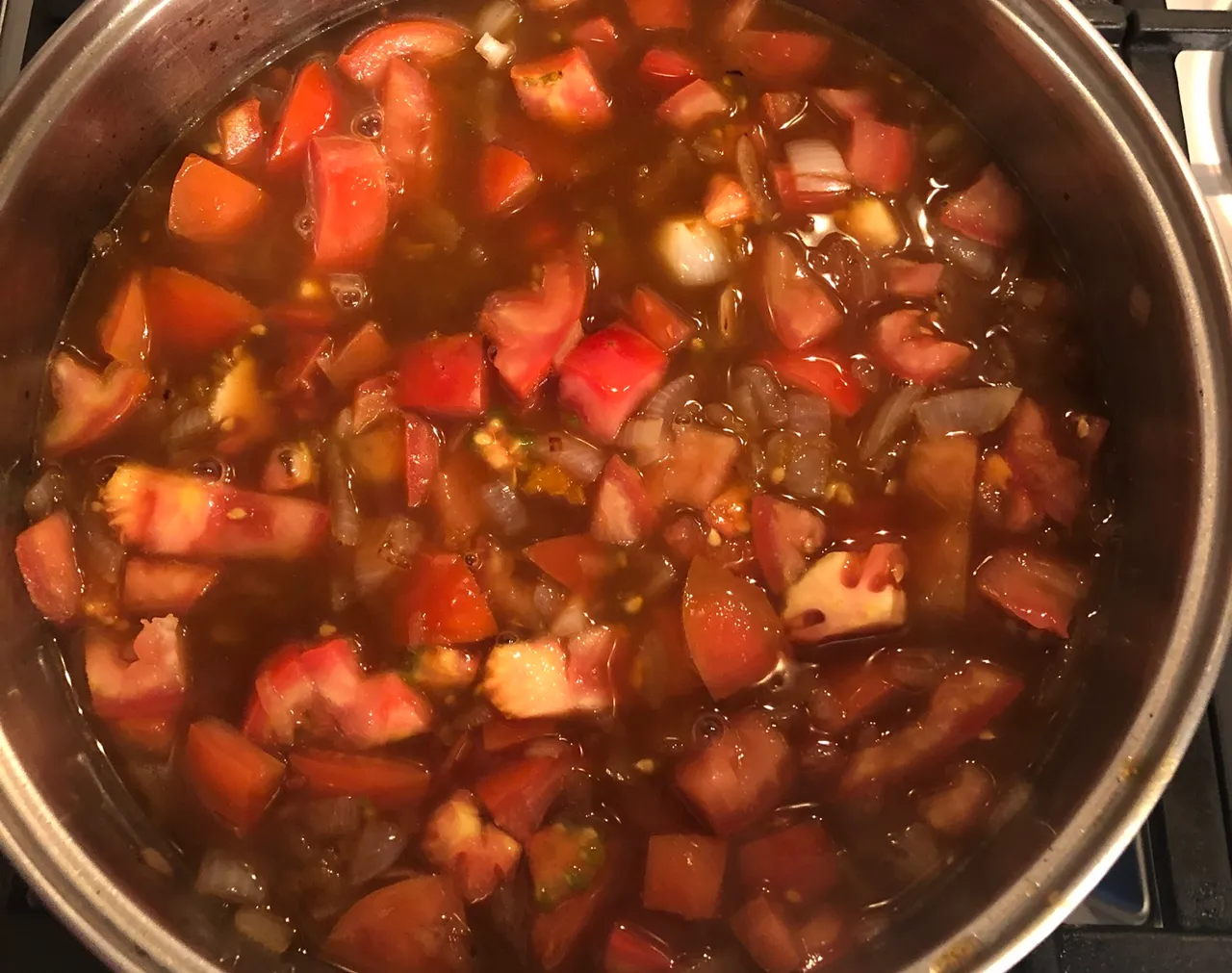
Here I add some water. Beef stock/broth in those days was a luxury, plus if your money is running out, water is the cheapest. The sauce reduces by quite a lot, so with the addition of the chutney, it will become nice and thick.
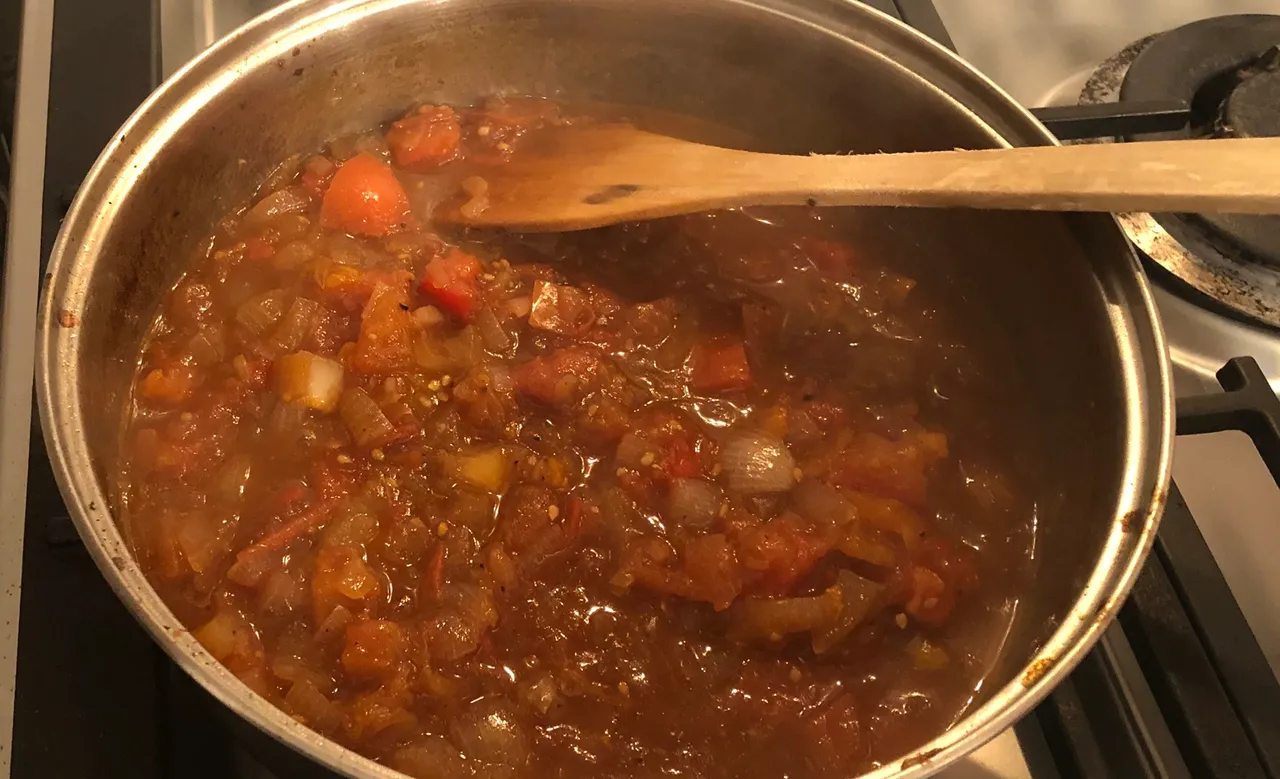
Here is the finished product! I think this is the easiest and most stripped-down version of this recipe.
Braaiing/BBQ the Meat
The most traditional recipes will talk about pap en wors (porridge and sausage). Sausage (or "boerewors") is a traditional South African sausage made with coriander seeds. I will post some images below of the braai and how I think a traditional braai will look like (with one addition of BBQ-ed mushrooms).

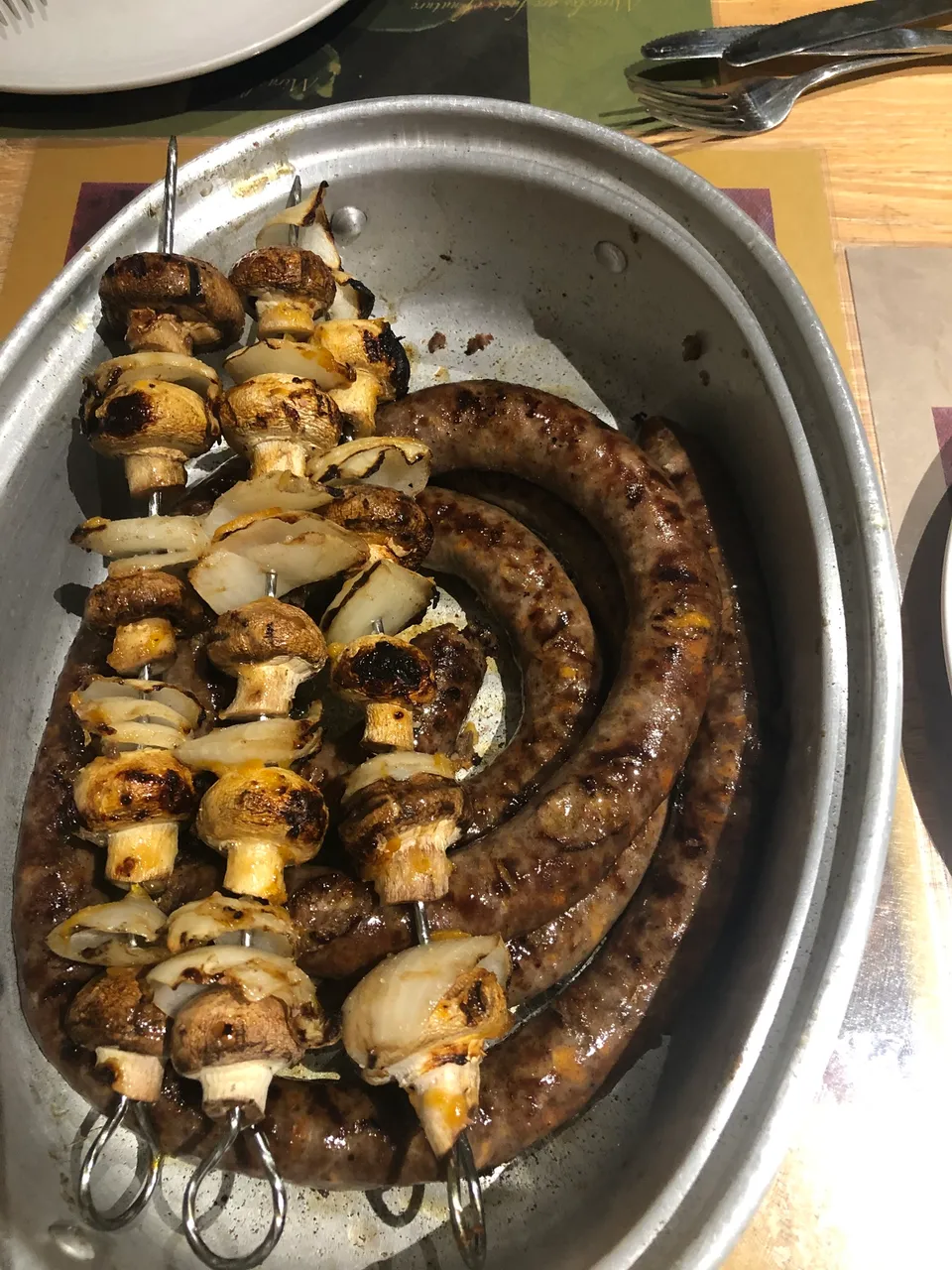
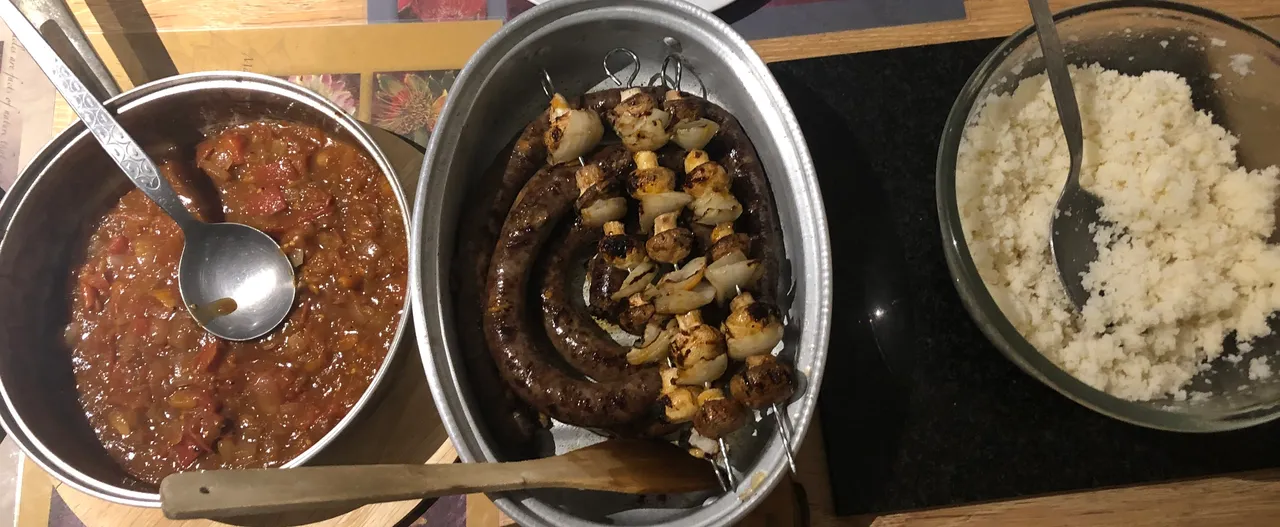

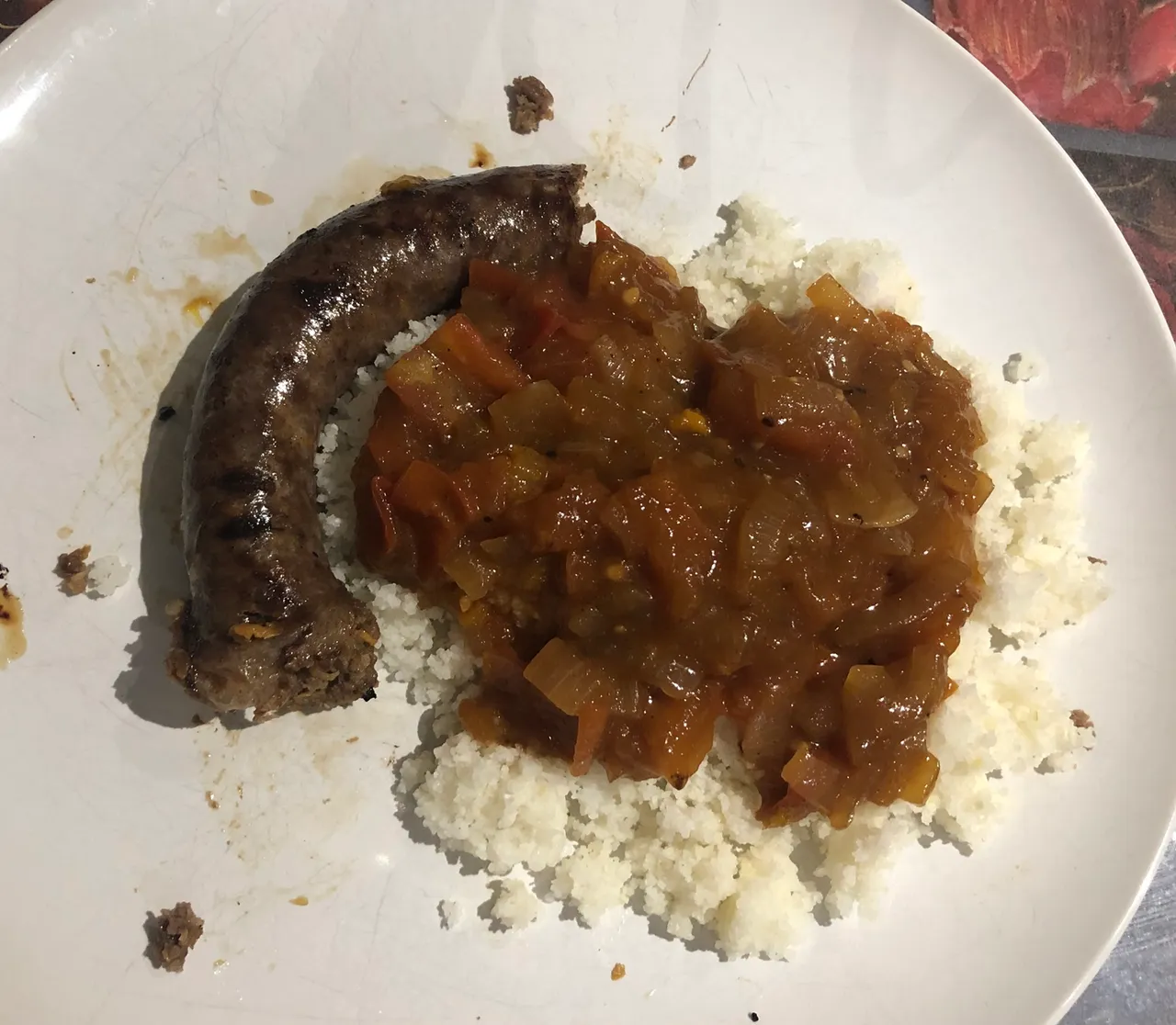
And there you have it! A traditional South African meal I think most cultures in South Africa enjoy! Even if the origins can be traced to the poor lumberjacks from the South Cape, most South Africans will still make some variant of this recipe due to its availability and "cheapness". I hope you try this recipe and enjoy some of the Local (South) African cuisine!